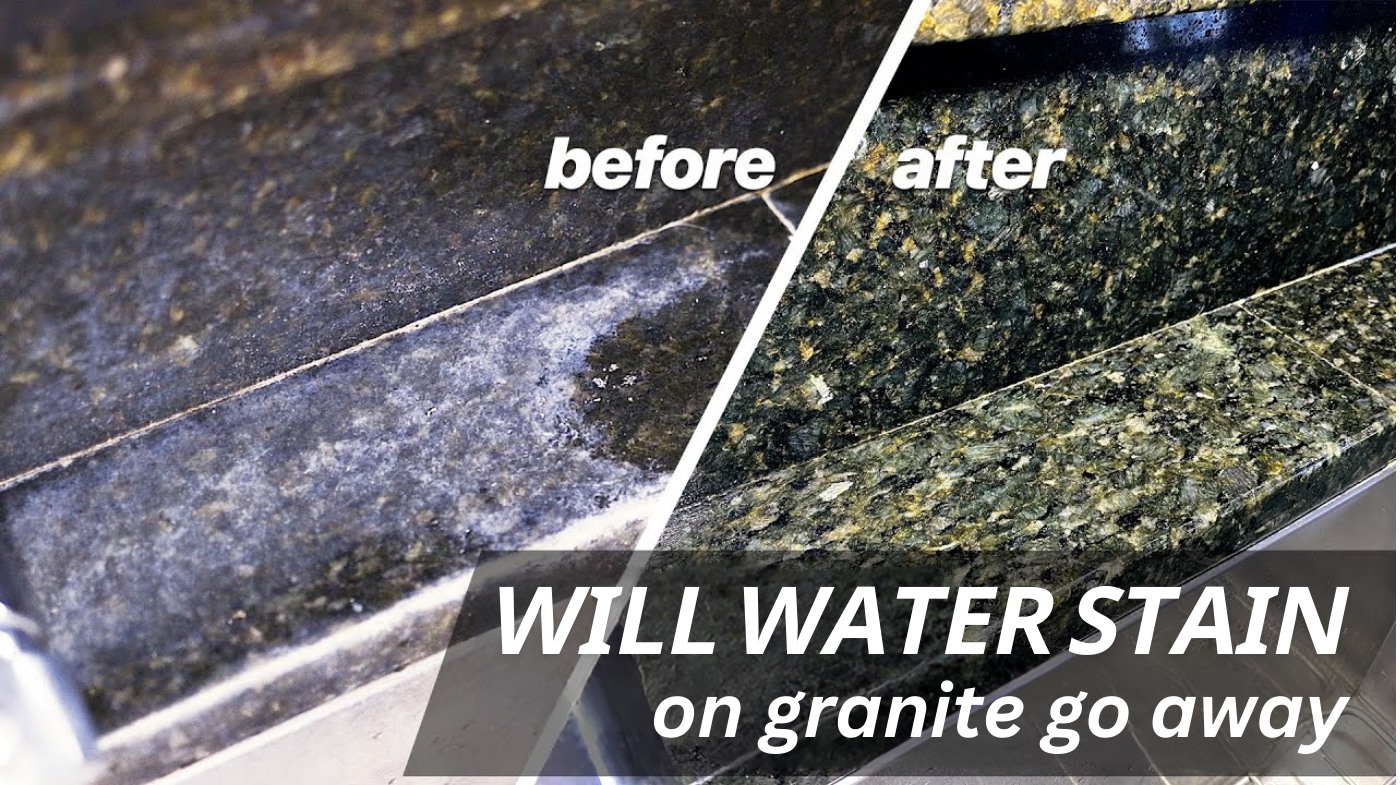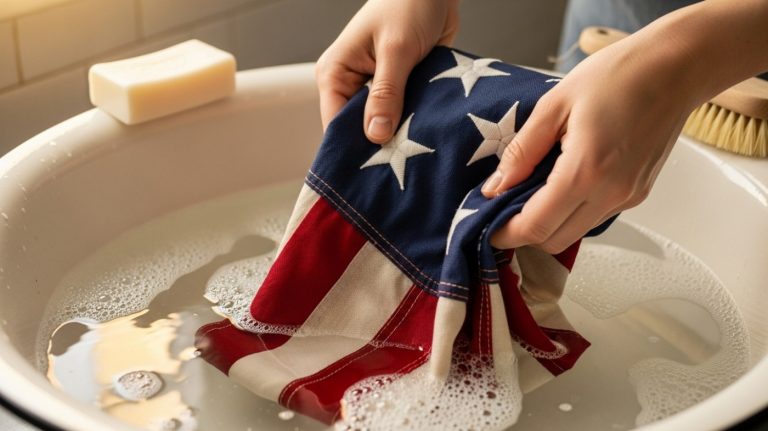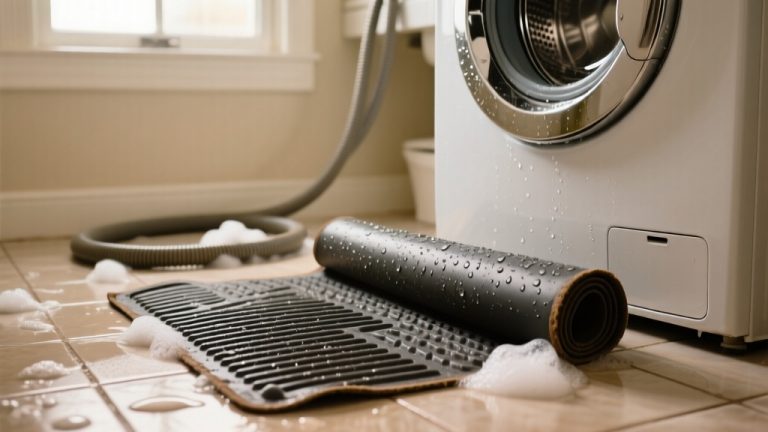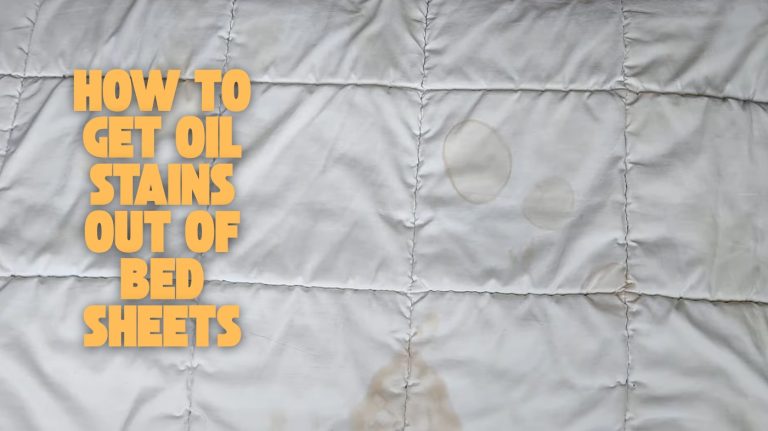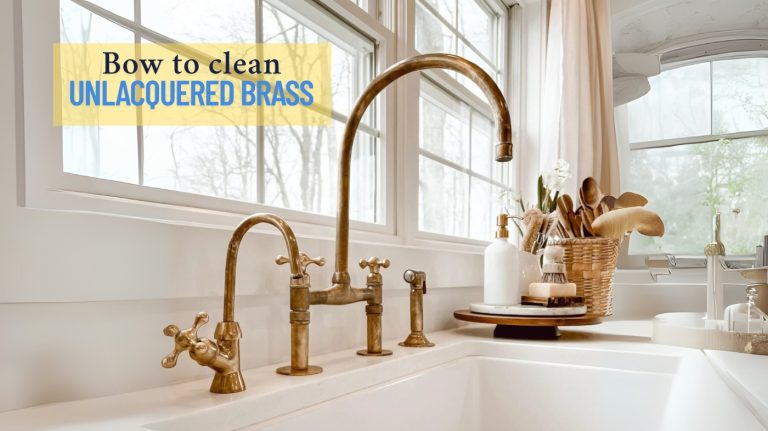Will Water Stain on Granite Go Away? Know What Really Works
You won’t see water stains on granite disappear on their own, especially if mineral deposits have set in or the stone is unsealed.
Since granite’s porosity influences absorption, stains often require prompt cleaning using mild detergents, baking soda paste, or, for deep deposits, poultices.
Proper sealing prevents moisture penetration and eases removal of future marks. Understanding stain formation and effective treatment methods is essential to maintain granite’s appearance over time.
Key Takeaways
- Simple water stains on granite can fade over time but often require prompt cleaning for complete removal.
- Hard water stains, caused by mineral deposits, do not go away naturally and need specific cleaning methods.
- Well-sealed granite resists water absorption, reducing stain formation and aiding natural fading of minor stains.
- Unsealed or porous granite absorbs moisture, making water stains more permanent without proper treatment.
- Immediate wiping and proper cleaning prevent water stains from setting and improve chances of removal.
What Causes Water Stains on Granite?
Water stains on granite result primarily from the interaction between moisture and the stone’s physical and chemical properties.
You’ll encounter two main types: simple water stains from condensation, usually removable, and hard water stains caused by mineral-rich water depositing calcium and magnesium as it evaporates.
Environmental factors like high humidity, spills near faucets, and daily use increase stain risk. Physically, granite’s porosity and surface texture influence water retention, while sealant quality determines protection levels.
Proper sealing and periodic resealing of granite surfaces are essential to minimize water penetration and staining.
Chemically, minerals react with soap residues or cleaning agents, exacerbating stains, especially in hard water conditions. Maintenance habits also matter; inconsistent cleaning or improper products can worsen stains.
Using mild dish soap and avoiding abrasive or harsh chemicals helps preserve the granite’s protective sealant and reduces stain formation.
How Granite’s Porosity Affects Stain Formation?
Because granite’s porosity governs how liquids penetrate its surface, understanding this characteristic is essential for managing stain formation.
Porosity depends on pore size, distribution, and connectivity, which vary by geological origin and mineral composition. Higher porosity creates greater absorption, allowing water to infiltrate subsurface layers and deposit minerals, leading to persistent stains.
Surface finish alters effective porosity—honed surfaces absorb more than polished ones. You need to reflect on:
- Pore volume: 0.4%–1.5% typical; >5 microns pores greatly increase staining risk
- Pore connectivity: Interconnected pores enable lateral stain spread beyond surface
- Absorption rates: High-porosity granite absorbs up to 1.0% by weight, retaining moisture longer
This porosity-driven mechanism explains why some granites stain more deeply and resist simple cleaning.
Immediate Steps to Clean Fresh Water Stains
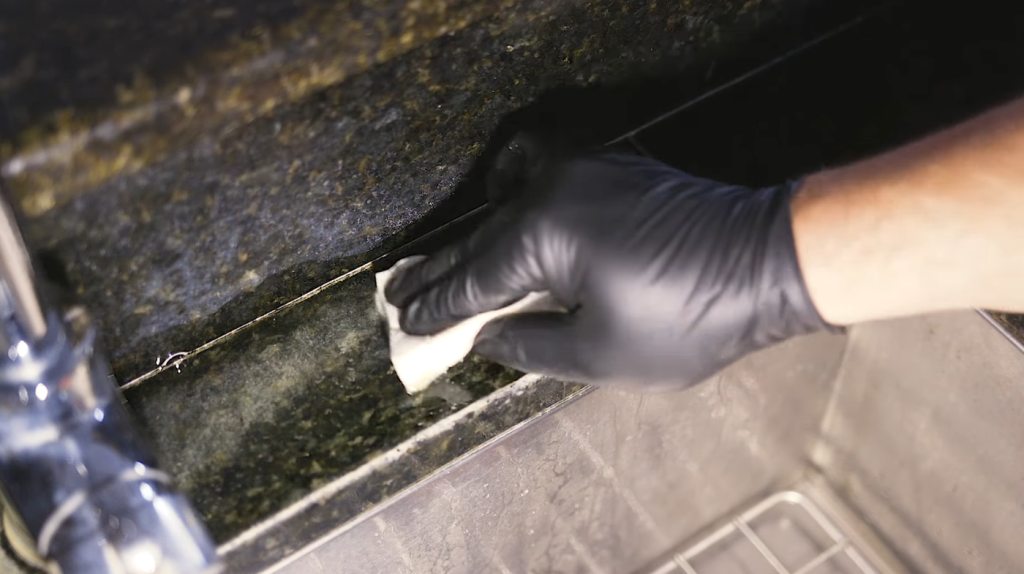
Act quickly to address fresh water stains on granite surfaces to prevent mineral deposits and discoloration. Immediately wipe spills with a soft sponge, then dry thoroughly using a microfiber cloth to avoid moisture absorption.
Cleaning fresh stains promptly is essential because simple stains are generally easier to remove compared to hard water stains. Clean fresh stains by applying a mild dish soap and warm water solution enhanced with rubbing alcohol, gently buffing in circular motions.
Rinse with clean water and dry to prevent residue and new stains. Avoid abrasive tools; use soft brushes or steam to loosen buildup if necessary. Below is a summary of immediate cleaning steps:
| Step | Method | Purpose |
|---|---|---|
| Wipe Spill | Soft sponge or cloth | Prevent stain formation |
| Clean Stain | Soap, water, rubbing alcohol | Remove fresh stains |
| Scrub Gently | Soft brush or sponge | Loosen mineral deposits |
| Rinse | Clean water | Remove cleaning residues |
| Thorough Drying | Microfiber cloth | Prevent moisture absorption |
Using Baking Soda Paste to Remove Water Stains
Utilize a baking soda paste to effectively tackle water stains on granite surfaces, especially those caused by hard water mineral deposits.
Mix baking soda with water until it reaches a sour cream consistency. Apply the paste evenly over the stain and gently scrub with a soft-bristled brush to avoid damaging the granite’s surface.
Rinse thoroughly with water and dry immediately using a microfiber cloth to prevent residue buildup. It is important to note that darkening from water typically disappears when dry and does not require stain removal.
Key points to follow:
- Baking soda’s mild abrasiveness lifts calcium and magnesium deposits without harming granite or sealants.
- Suitable for polished or matte granite, sealed or unsealed, and won’t cause discoloration.
- For persistent stains, leave the paste overnight before rinsing to enhance effectiveness.
Applying Poultice for Deep Mineral Deposits
When baking soda paste fails to remove stubborn water stains caused by deep mineral deposits, applying a poultice offers a more intensive solution.
You’ll need to prepare a thick poultice paste—commercial like HMK R152 or homemade with baking soda and water—and apply it over the stain, extending beyond its edges.
Protect the area from sunlight and wind, and let the poultice dry completely for 48 to 72 hours. Then, carefully remove the dried paste with a brush. Repeat if necessary.
| Step | Details |
|---|---|
| Preparation | Clean, dry, wax-free surface |
| Application | Thick poultice layer, extend beyond stain |
| Drying Time | 48–72 hours, shield from sun & wind |
| Removal | Brush off dried poultice |
| Reapplication | Repeat until stain disappears |
When to Use a Razor Blade on Granite Stains?
How do you handle stubborn mineral deposits on granite that resist conventional cleaning methods? When hard water stains or mineral buildups form thick, crusty layers, a razor blade can provide mechanical removal on properly sealed, non-porous granite surfaces.
However, it is important to consider alternative cleaning methods such as microfiber cloths or specialized granite cleaners before resorting to a blade.
Confirm your granite is genuine, sealed within the last year, and free of scratches or etches before scraping.
Key guidelines for razor blade use include:
- Hold a single-edge blade at 30°–45° angle, scraping gently parallel to the surface
- Avoid excessive pressure to prevent micro-scratches or sealant damage
- Clean residue immediately with a dry sponge and follow up with pH-neutral cleaner and distilled water
How Effective Are Water Stains at Fading Over Time?
Although some simple water stains on granite may fade over time, their persistence largely depends on prompt intervention and the type of stain involved.
Simple water stains caused by condensation can diminish naturally, especially in controlled humidity and temperature conditions.
Condensation water stains may fade naturally with stable humidity and temperature conditions.
However, hard water stains containing mineral deposits rarely fade without treatment, as minerals physically alter the granite’s surface appearance.
If you delay addressing these stains, they often become more entrenched, reducing fading potential.
In cases where granite is not properly sealed, moisture can be absorbed causing stains to appear more pronounced and harder to remove. unsealed granite
Proper sealing also influences stain longevity; well-sealed granite resists stain absorption, aiding natural fading.
Ultimately, relying solely on time is ineffective for mineral-based stains. You should act quickly using appropriate cleaning methods to prevent permanence and preserve granite’s durability and aesthetic integrity.
Best Practices for Preventing Water Stains on Granite
Below are some best practices to keep your granite surfaces looking flawless and water-stain free:
Proper Granite Sealing
Proper granite sealing requires selecting a sealer specifically designed to penetrate and protect natural stone without altering its appearance. You’ll want a high-quality penetrating sealer compatible with your granite’s type and finish.
Penetrating sealers, like Stone Care International’s Granite & Stone Sealer, last longer and provide more thorough protection.
Preparing the surface is critical: clean thoroughly with a pH-neutral cleaner and make certain it’s fully dry before application.
Apply the sealer evenly, maintaining a wet surface during multiple coats if necessary, then remove excess after 30 minutes to prevent residue. Allow the sealer to cure undisturbed for 6 to 24 hours for ideal bonding.
Key best practices include:
- Use a penetrating sealer providing water and stain resistance without surface alteration
- Clean and dry granite completely before sealing
- Follow manufacturer’s curing time and test water repellency before regular use
Immediate Spill Cleanup
Act swiftly to blot water spills on granite surfaces using a soft cloth or paper towel, preventing moisture from spreading and seeping into the stone. Avoid wiping in circular motions initially; blotting contains the spill, minimizing absorption and dark spot formation.
Clean the area with warm water and mild dish soap to remove residues without damaging the sealant—steer clear of acidic or abrasive cleaners immediately after spills. After cleaning, rinse thoroughly and dry with a microfiber cloth to prevent mineral deposits and water marks.
Buff gently for added shine and moisture removal. Keep soft cloths and gentle cleaners accessible for prompt response. This precise approach preserves the granite’s integrity, reduces stain risk, and maintains uniform surface texture and color, ensuring your granite remains visually pristine over time.
Recommended Sealers and Maintenance Tips
You can keep your granite surfaces looking their best by following these expert-recommended sealers and maintenance tips:
Best Granite Sealers
Although granite is naturally durable, sealing it effectively is crucial to prevent water stains and other damage. You should prioritize fluorocarbon aliphatic resin sealers, like the MB Stone MB series, for their superior durability and resistance to evaporation compared to silicone-based options.
Home users often prefer Granite Gold or Weiman sealers, which provide reliable barriers against water and stains. The Weiman Granite & Stone Sealer, for example, offers a protective barrier against water and soil penetration, making it ideal for various stone surfaces.
Consider these key points when selecting sealers:
- Use professional-grade sealers with fluorocarbon resins for long-lasting protection and minimal maintenance.
- Confirm thorough cleaning and even application with multiple coats on porous granite for peak adhesion.
- Maintain sealed surfaces with pH-neutral cleaners and promptly wipe spills to preserve the protective barrier and prevent staining.
Sealing Frequency Guidelines
Selecting the right sealer sets the foundation, but maintaining granite’s protection requires understanding how often to reseal and how to care for the surface properly.
Most professionals recommend annual sealing; however, frequent kitchen use may demand resealing every 6-12 months. High-quality penetrating sealers can extend intervals to 3-5 years, especially on denser, less porous granite. Because granite is porous and can absorb moisture, sealing is crucial to prevent stains from liquids.
To determine resealing need, regularly perform water tests—if water darkens or soaks in, resealing is necessary.
Avoid harsh cleaners and abrasive materials; instead, use specialized stone cleaners with soft cloths to preserve the seal. Choose reputable brands with high-grade ingredients to guarantee durability.
This analytical approach to sealing frequency and maintenance optimizes granite’s resistance to water stains and prolongs its lifespan effectively.
Daily Maintenance Practices
Because daily maintenance directly influences granite’s durability and appearance, using the right sealers and cleaning methods is essential.
You should select penetrating sealers designed specifically for granite, which repel water and oil to prevent stains without altering the stone’s finish.
Avoid harsh chemicals that degrade the surface. Proper sealing is vital as lighter colored granites typically need more frequent sealing than darker ones to maintain their stain resistance.
For routine cleaning, use a soft cloth or sponge with warm water and mild detergent, and immediately wipe spills—especially acidic ones—to prevent etching. Employ granite-friendly daily stone cleaners with microfiber cloths for effective yet gentle care.
Key daily maintenance tips include:
- Use sealers compatible with natural stone and test on a small area before application.
- Clean granite surfaces with non-abrasive, pH-neutral solutions to maintain the seal.
- Address water stains promptly by wiping off standing water to avoid absorption.
Frequently Asked Questions
Can Water Stains Cause Permanent Damage to Granite Surfaces?
Yes, water stains can cause permanent damage to granite surfaces if you don’t address them quickly. Hard water stains, containing mineral deposits like calcium and magnesium, can penetrate the stone’s pores and dull its finish.
Over time, these mineral buildups become difficult to remove and may require professional treatment. To prevent lasting harm, you should clean spills promptly and regularly seal your granite to maintain its protective barrier.
Are There Specific Granite Types More Prone to Water Staining?
You’ll find that honed granite, due to its matte finish and higher porosity, is more prone to water staining than polished granite. Lighter-colored granites also show water stains more readily because of color contrast.
Additionally, granite types with more porous or fractured mineral grains increase stain risk, while those rich in quartz and feldspar resist water absorption better.
How Does Humidity Affect Water Stain Formation on Granite?
You might say humidity “whispers” moisture into granite’s pores, increasing the chance water stains form. When humidity’s high, granite absorbs more liquid, especially if the sealant’s compromised or worn. This absorption can lead to visible water marks or deeper stains over time.
To counter this, you’ll want to control moisture with dehumidifiers and guarantee sealants are intact and reapplied regularly to maintain granite’s resistance to water penetration.
Can Natural Stone Cleaners Harm Granite’S Sealant?
Yes, natural stone cleaners can harm granite’s sealant if they contain harsh chemicals like ammonia or acids. You should avoid cleaners with bleach, vinegar, or abrasive agents, as these degrade the sealer’s protective barrier, making the granite porous and vulnerable to stains and etching.
Always choose pH-neutral, stone-specific cleaners to preserve the sealer’s integrity. Regular maintenance and proper cleaning guarantee your granite remains protected and durable over time.
Is It Safe to Use Vinegar or Bleach on Granite Water Stains?
You shouldn’t use vinegar or bleach on granite water stains. Vinegar’s acidity breaks down granite’s protective sealant, causing etching and dullness. Bleach, a harsh chemical, also damages the sealant and underlying stone, accelerating degradation.
Instead, use pH-neutral cleaners designed for granite, wipe spills promptly, and reseal surfaces regularly. This approach preserves the stone’s integrity and appearance without risking permanent damage from acidic or abrasive substances.
Say Goodbye to Water Stains — Keep Granite Flawless
While water stains on granite might seem like a stubborn reminder of everyday use, they rarely become permanent blemishes. With prompt and proper care—like using baking soda paste, poultices, or even a razor blade in specific cases—you can gently coax these marks to fade away.
Understanding granite’s nature and sealing it regularly will keep your surface looking pristine, turning what feels like an imperfection into just a minor whisper of past spills.

